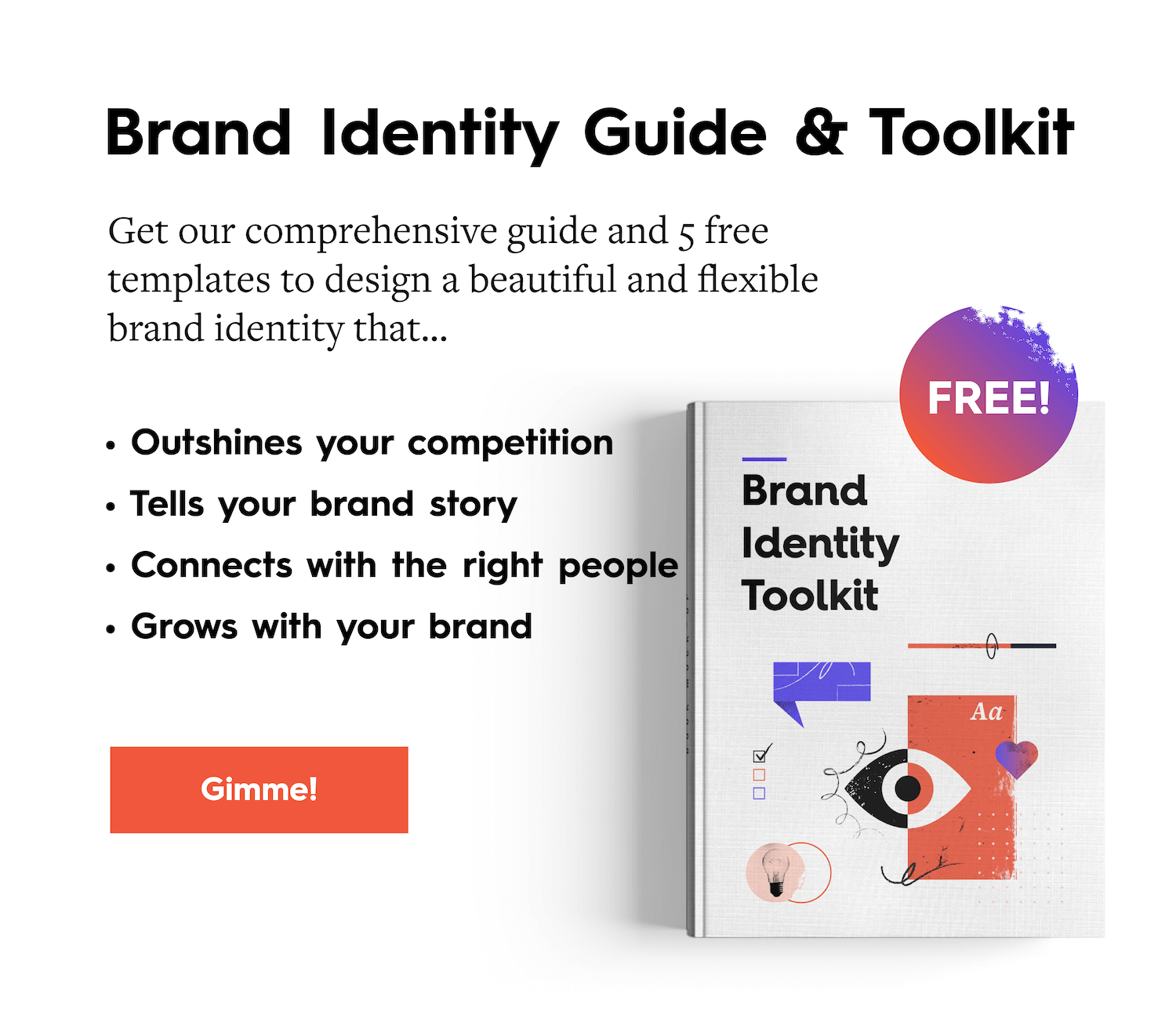Whether you’re rebranding, building a new content strategy, or prepping for a new product launch, you need to know how your brand is currently perceived in the market if you want to compete. A brand audit helps you get that perspective.
Essentially, it’s a straightforward health check that reveals what’s working, what’s shaky, and what needs attention. With that information, you can realign your brand and marketing to match your business goals, audience perception, and market needs.
That said, if you want to be successful, you need to conduct your brand audit the right way. Before we dive in, let’s talk more about what that entails.
 What Is a Brand Audit?
What Is a Brand Audit?
A brand audit shows you the current state of your brand. Before charting where you need to go, an audit helps you see what’s working, what isn’t, what to keep, and what you need to evolve.
A complete audit includes two parts:
- Auditing your own brand.
- Auditing your competitors’ brands.
A solid audit gives you the full picture of how you stack up to competitors, allowing you to take an objective look at:
- Positioning: What do you promise, and do people understand it the same way you do?
- Messaging: Do your key points stay consistent when someone moves from your site to a sales conversation to your social posts?
- Visuals: Does your look feel current and hold together across every place people see you?
- Customer experience: How do people discover you, try what you offer, make a purchase, and find help when they need it?
- Content: Is it genuinely useful, easy to find, and aligned with what people actually search for?
- Data: What do your traffic patterns, conversions, and retention tell you about whether people trust and understand you?
- Competitors: Where do they pull ahead of you, and where do you clearly own the space?
- Internal alignment: Do your leadership team, sales reps, and support staff all tell the same story about who you are?
This gives you both the internal and external insights you need to stand out in the market.
When Should You Do a Brand Audit?
If you’re considering a rebrand, a brand audit should be your first step—before jumping straight into logo sketches or brainstorming taglines. To create a strong brand, you really need to dig into who you are, what you actually do, and why the company exists in the first place. These aren’t abstract concepts; they directly influence how you present your brand to the world. A brand audit provides a blueprint to rebrand successfully and cohesively. (By the way, it might reveal that you don’t need to rebrand at all. Find out more about how to tell if you need to rebrand.)
However, rebranding is not the only time to do a brand audit. It’s just as valuable to do when growth stalls, new competitors emerge, or your story stops landing the way it used to. An up-to-date audit is also important information to have if you’re working with an outside partner who may not be as intimately familiar with your brand or market landscape.
How to Conduct a Brand Audit
Use a clear framework, collect data carefully, and apply your insights to strengthen your marketing and branding. Here’s our step-by-step guide to do it.
Step 1: Download our Brand Audit Template.

Use our free Brand Audit Template. It includes templates for your brand and your competitors.
Share the editable PDF with your core team—and anyone with valuable perspective on brand, culture, customers, and operations in your organization.
To make the audit useful:
- Gather all relevant information.
- Answer every question thoroughly and honestly.
- Gather input from all levels, not just leaders. (It’s especially important to get input from people who work closely with customers.)
That’s the best way to align on key takeaways you want to carry forward.
Step 2: Audit your own brand.
Distribute the questionnaires and collect individual responses across these three core categories:
- Current Core Identity: your business, values, competition, people you’re trying to reach, and more. Some questions seem simple. But they aren’t if your brand strategy isn’t documented.
- Current Verbal Identity: how you talk about the brand, including tagline, value prop, messaging pillars, voice.
- Current Visual Identity: how you look, including logo, color, type, imagery.
It’s important that nobody sugarcoat their responses. They should be honest and candid to get an accurate picture of both the internal and external perception of your brand. For example, if your culture, employee experience, and stated values don’t match how the brand shows up, it will be difficult to present a cohesive image.
Also, vague answers cause friction and confusion, so it’s better to get clear, candid responses that give you an honest snapshot of current performance.
CORE IDENTITY
This covers the foundation, including:
- Business name
- What you do
- Brand Heart (purpose, vision, mission, values)
- Augidence
- Competition
- Key differentiators
- Brand personality
Need to document any of these? Try these guides:
- How to do a competitive analysis in 5 steps
- How to find your Brand Heart
- How to create marketing personas in under 60 minutes
- How to find your brand personality
VERBAL IDENTITY
This is how you speak, including:
- Tagline: a single, clear line
- Value prop: the unique value people get from your product or service
- Key messaging: main selling points or pillars
- Voice: how you sound in content
Keep your message consistent everywhere and anchored to your values and unique edge.
Need more detail? Start here:
- The secrets behind a great tagline
- How to write a great value proposition
- How to create compelling brand messaging
- How to find your brand voice
VISUAL IDENTITY
Audit what works and what doesn’t for visual elements, including:
- Logo
- Color palette
- Typography
- Visual elements (photography, illustration, iconography)
Once you’ve outlined that information, ask yourself if your current identity:
- Reflects your personality?
- Aligns with your values?
- Differentiates your brand?
Capture your takeaways, including:
- Biggest opportunities to improve
You may not personally have all the insights you need to answer these questions. In that case, consider other sources.
Gather Customer Insights
A brand audit isn’t complete until you see the brand through customers’ eyes. You want to know what they think, feel, and experience so you can strengthen what’s great and fix what’s confusing.
Useful methods:
- Craft customer surveys and interviews for priorities, likes, and dislikes. Tools like SurveyMonkey can help.
- Conduct focus groups for context and stories you won’t get from checkboxes.
- Use social listening to track comments and reviews in real time. Try Hootsuite Streams.
Analyze the feedback. If people rave about product quality but say messaging is unclear, dial up clarity in your positioning and campaigns. If social comments point to new needs, tailor content to match. Customer insight makes your brand more relevant—and easier to choose.
Review Marketing Materials
Strong brands stay consistent where it counts. Gather everything: website, social profiles, ads, emails, decks, one-pagers, brochures, sales scripts. Use your brand audit template to review each asset for tone, voice, visuals, message, and value prop.
Ask:
- Does this reflect who we are and what we stand for?
- Is the story consistent across channels?
- Do the visuals feel like the same brand?
- Would a new customer get the same impression on the site and on social?
Spot the gaps. Maybe the site feels premium, but social posts feel casual and scattered. Maybe emails over-explain while ads stay vague. Use these findings to tighten guidelines and bring every touchpoint into alignment.
Regular reviews build recognition and trust, and they keep every piece of content pulling its weight.
Analyze Brand Performance
Now look at how your brand performs in the market. This shows what’s resonating and where to improve.
Things to look at:
- Website analytics for traffic sources and behavior. Google Analytics is a good start. New to GA4? Try the GA4 Skillshop.
- Social analytics for reach, engagement, and content performance. Native platform analytics work well: Twitter analytics, Facebook Audience Insights, LinkedIn analytics.
- Sales and retention data for conversion and loyalty signals
- Reviews and NPS for satisfaction and advocacy. (Here’s an NPS overview.)
These insights can tell you a lot. For example, if social engagement is strong but website conversion drags, invest in clearer messaging, stronger offers, and better UX. If traffic is high but time on page is low, the content likely misses intent. Use the data to focus effort where it will move the needle. And track these metrics regularly to stay aligned with goals and shifting market conditions.
Step 3: Audit 3–5 competitor brands.
Focus on external expression, especially visuals. Review each competitor’s website (start with the homepage), social profiles, and other public-facing content. Also, look at their social media marketing and engagement to gauge reach and traction.
COMPETITOR AUDIT
- Logo: Wordmark, symbol, or both? What shapes or imagery?
- Typography: Serif or sans? Which weights?
- Color palette: Dominant colors? Overlaps across the category?
- Photography: Stock or custom? What style?
- Illustration: What approach? Are people depicted?
- Brand story: Does the visual system communicate personality and positioning?
- Copy: Tone—witty, serious, warm, technical?
Then summarize:
- What themes or tropes repeat across the category?
- Where can you clearly differentiate?
Step 4: Collate your audit answers.
Don’t dump raw surveys on your team or agency. Synthesize them. Look for areas of alignment and disagreement, especially internally. Both are useful. Alignment shows what to keep. Misalignment shows where the brand isn’t clear or consistent.
Step 5: Gather your team to come to a consensus.
Bring the core team together. Share the insights. Decide what stays, what changes, and what needs exploration. Also, include key stakeholders from product, sales, support, and HR to discuss findings.
For example, you might find that…
- Brand Heart feels right, but the tagline is vague. Maybe it’s time to rewrite it with a sharper promise.
- Logo works, but voice and tone don’t match the brand’s personality, so you need to update voice guidelines and examples.
- Visuals look like everyone else, so it’s time to refresh the palette and type to create separation.
Aim for a clear direction that people can rally around, and tie your findings to business objectives. Then use them to guide priorities and strategy.
Step 6: Document your findings.
Whether you’re using your audit to rebrand or revamp your strategy, capture the findings in official documentation or translate them into a creative brief to guide your team. (Use our guide to write a useful creative brief.) Make sure to spell out the brand strategy, what you stand for, your market position, and the creative requirements to keep decisions aligned.
Use Your Brand Audit Findings to Improve Your Brand
With the audit done, you know what you’re solving and how to move forward. Again, don’t let this be a one-and-done experience.
- Keep auditing as you grow to stay aligned with your goals.
- Keep feedback flowing. Even things like quick phone surveys help capture fast signals.
- Keep conversations going between departments. Sales’ insights can help marketing, marketing can help product teams, etc.
Remember: Your ultimate goal is to create a cohesive, comprehensive brand experience that accurately reflects who you are. Take the time to audit, refine, test, and improve—and you’ll bring that experience to life at every touchpoint.
Need a partner to navigate the tricky parts of content marketing? Find out more about our content marketing services FAQ. Or get in touch.






Would like learn and know more about branding and re-branding.